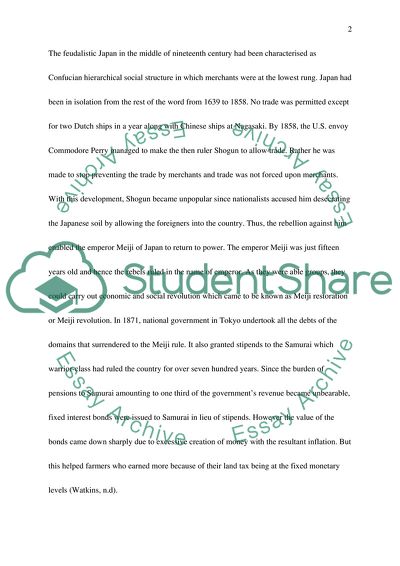Cite this document
(Factors That Contributed to Japan's Industrialization During the Meije Coursework, n.d.)
Factors That Contributed to Japan's Industrialization During the Meije Coursework. Retrieved from https://studentshare.org/history/1747488-evaluate-factors-that-contributed-to-japans-industrialisation-during-the-meije-period
Factors That Contributed to Japan's Industrialization During the Meije Coursework. Retrieved from https://studentshare.org/history/1747488-evaluate-factors-that-contributed-to-japans-industrialisation-during-the-meije-period
(Factors That Contributed to Japan'S Industrialization During the Meije Coursework)
Factors That Contributed to Japan'S Industrialization During the Meije Coursework. https://studentshare.org/history/1747488-evaluate-factors-that-contributed-to-japans-industrialisation-during-the-meije-period.
Factors That Contributed to Japan'S Industrialization During the Meije Coursework. https://studentshare.org/history/1747488-evaluate-factors-that-contributed-to-japans-industrialisation-during-the-meije-period.
“Factors That Contributed to Japan'S Industrialization During the Meije Coursework”, n.d. https://studentshare.org/history/1747488-evaluate-factors-that-contributed-to-japans-industrialisation-during-the-meije-period.


